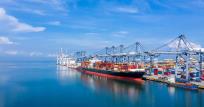

IRENA Members Call for Hydrogen Trade Beyond Borders
Newsletter
“In an era of high energy and commodity prices, coupled with an inefficient energy system, making green hydrogen a global trade commodity is a fundamental prerequisite to accelerate the transition towards a more sustainable system based on renewables,” said Francesco La Camera, IRENA Director-General, at the Fifth Meeting of the Collaborative Framework on Green Hydrogen this week. The meeting provided a platform for IRENA Members to discuss plans for international trade of green hydrogen and derivatives, as well as challenges they encountered in moving from announcements to projects.
Quoting IRENA’s flagship World Energy Transitions Outlook Report for 2022, Mr. La Camera said hydrogen can help mitigate 10 per cent of the global CO2 emissions from energy by 2050 and reach 12 per cent of final energy demand. “A quarter of this hydrogen may be supplied through global trade. This stands in stark contrast to the situation today, where hydrogen is hardly traded across borders due to limited transport infrastructure and is consumed mostly where it is produced”.
🟢JUST LAUNCHED🟢
— IRENA (@IRENA) May 20, 2022
Check out @IRENA’s new report on #hydrogen trade, analysing supply costs for #green #H2 across regions & time horizons 👇 https://t.co/n4b9gLutva
The Collaborative Framework on Green Hydrogen, co-facilitated by Morocco and the European Commission, witnessed a high level of engagement by private actors and government representatives from member countries who discussed the role of international hydrogen trade to strengthen energy security while accelerating the decarbonisation of hard to abate sectors. Attendees also discussed the key barriers to the development of international green hydrogen projects and trade.
The event marked the launch of the “Global Hydrogen Trade to Meet the 1.5°C Climate Goal: Green Hydrogen Cost and Potential” report, which explores the global cost evolution of green hydrogen towards 2030 and 2050 based on a geospatial analysis. It estimates the potential for green hydrogen production as a function of solar and wind resources, considering exclusion zones such as protected areas, forests, wetlands, urban centres, slopes, and water scarcity. This report shows that the potential to produce low-cost green hydrogen is widespread in all continents and exceeds by an order of magnitude the energy consumption of our planet.




